GLOBULARIIFOLIA ssp. GLOBULARIIFOLIA
Synonyms :
Umbilicus globulariifolius Fenzl (1842) / Cotyledon globulariifolia (Fenzl) Baker (1870) / Sedum globulariifolium (Fenzl) Hamet (1929)
Umbilicus libanoticus var. connivens Post (1896)
Umbilicus cyprius Holmboe (1914) / Rosularia cypria (Holmboe) Meikle (1977)
Distribution : South-western, southern and south-eastern Turkey, northern Cyprus, north-western Syria, western coastal Lebanon; on limestone, to 1400 m.
Description (according to U. Eggli in IHSP, 2003) :
Caudex absent, with thickened tap-root.
Rosettes flattish, solitary or with few subsessile to stalked offsets, 3 - 11 cm diameter.
Leaves oblong-spatulate with truncate to rounded apex, 1,5 - 5 cm, narrowest near the base, somewhat fleshy, fresh green, completely covered by dense glandular hairs, viscid and with resinous scent.
Inflorescences lateral or (in cultivation) mostly terminal slender pyramidal to spicate panicles, 10 - 40 cm, lower part leafy.
FIowers 5-merous, semiglobular to urceolate, petals 5 - 7,5 mm, united for 1/3 - 1/2, whitish to ivory or pale pink.
Cytology : 2n = 18
This striking taxon appears to flower laterally for several years in nature before finally producing a terminal inflorescence to die subsequently. Under cultivation, the rosettes are monocarpic, and the flowers are self-pollinating.
Rosularia globulariifolia on vertical chalk gorge walls very near sea level early April near Kalkan, Turquoise Coast :
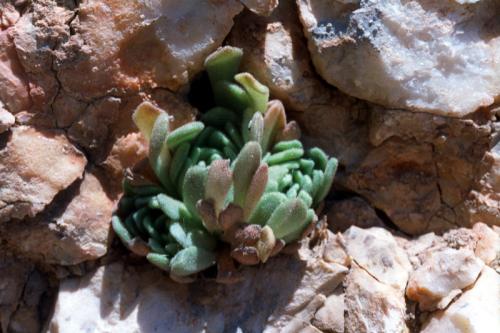
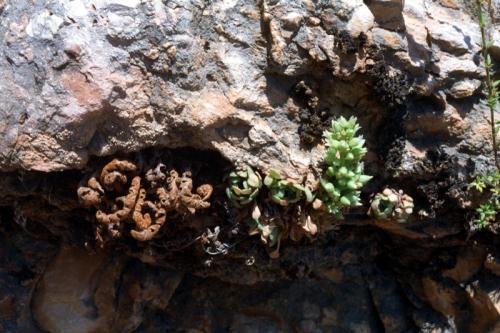
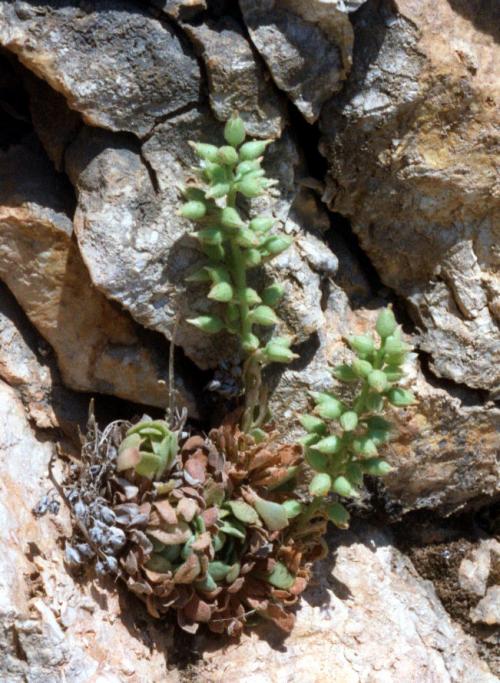
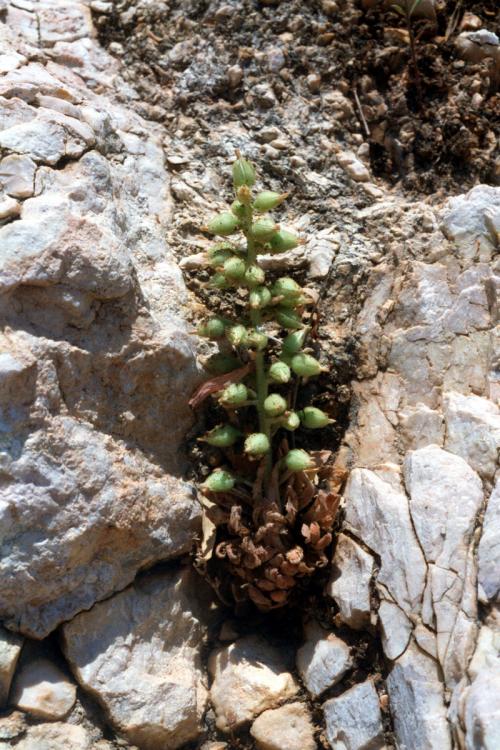
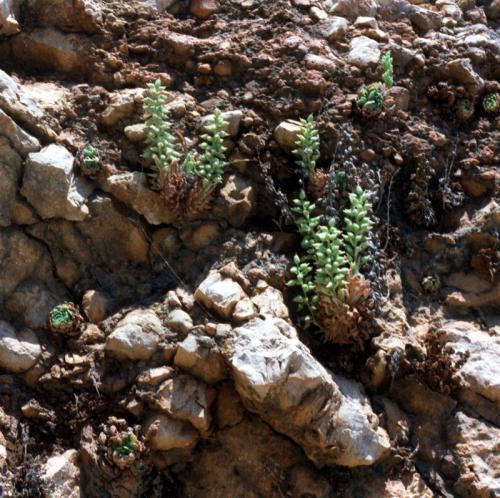
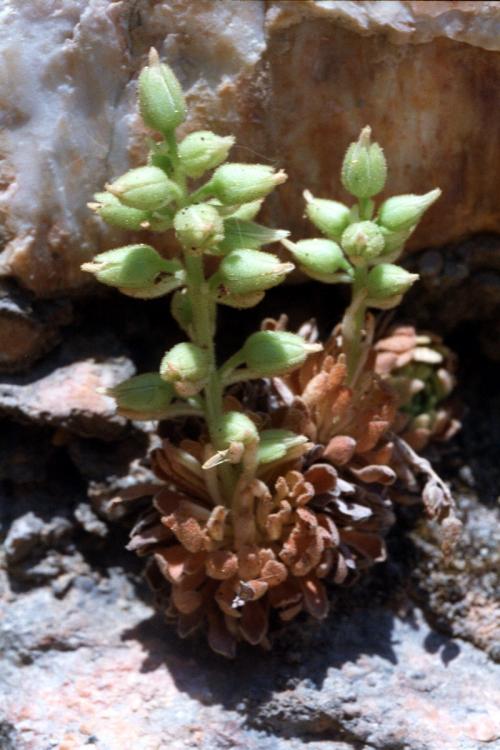
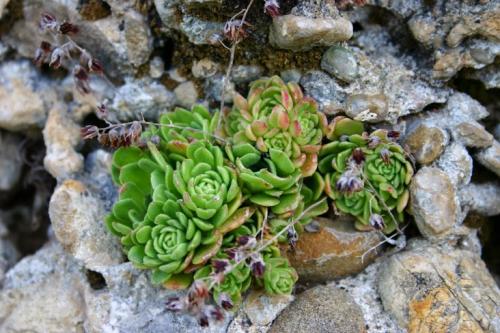
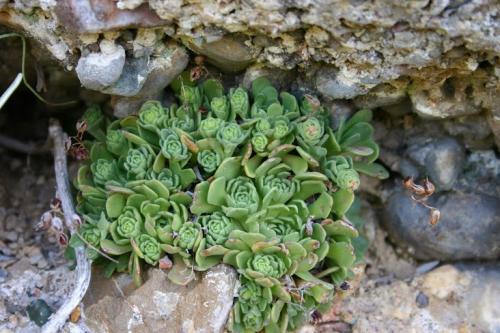
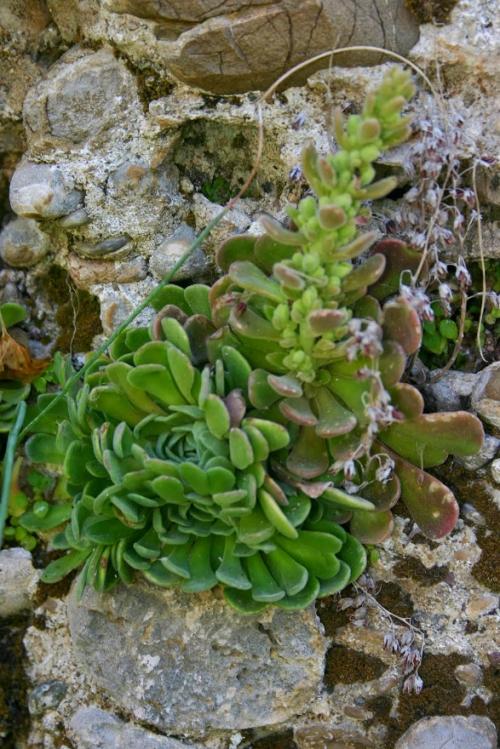
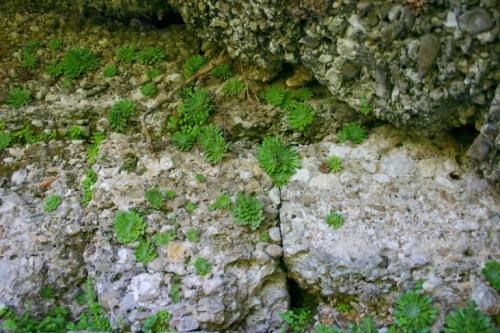
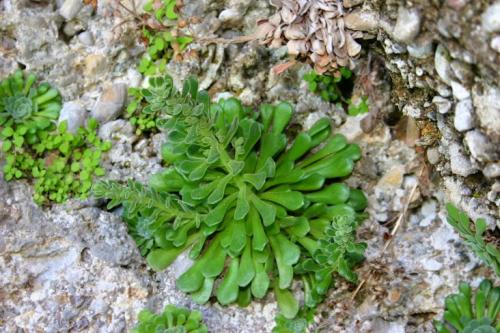
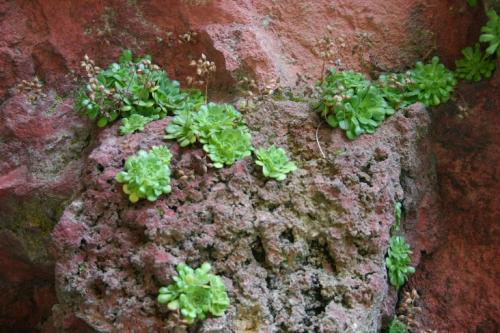
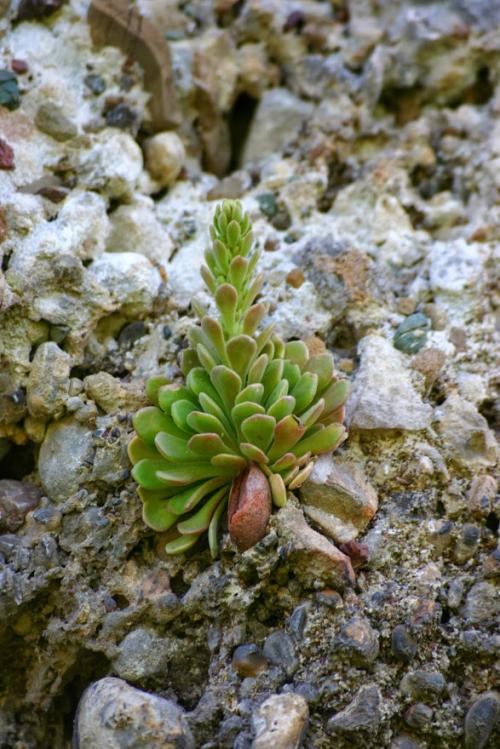
Photos Thomas Berndt